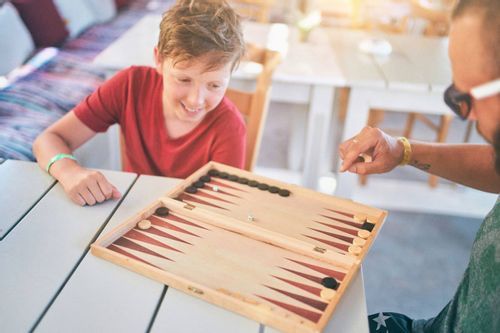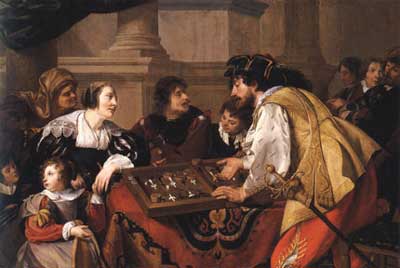Backgammon, the game of kings and commoners, has held our attention for over five millennia. A pastime of strategy and chance, it has danced through the corridors of history, gracing royal courts and humble taverns alike. Backgammon has been played in the shadow of the Pyramids of Egypt, within the cool shade of Grecian olive groves, on the polished marble tables of Rome, and within the lush private chambers of English lords. Let’s embark on a journey to discover the intriguing history of this ancient game.
The earliest archaeological evidence of Backgammon traces its roots back to the Mesopotamian region, now present-day Iran and Iraq. A game named the Royal Game of Ur, found in the Royal tombs of Ur, dates to 2600 BC and shares a striking similarity with Backgammon. From the fiery landscapes of Mesopotamia, the game travelled through trade routes, finding homes in the corners of Greece, Rome, and Persia. While the fundamental aspects remained, each civilization added a unique touch to the game, creating a rich tapestry of versions and variants.
The Middle Ages brought another dimension to Backgammon’s tale as the game made its way to the British Isles. The version we know today was christened ‘Backgammon’ in England in the 17th century. The name is derived from ‘back’ and ‘gamen’, an Old English term meaning ‘game’. Over the centuries, it has transitioned from a game played by nobility and the upper classes to a game played and cherished by people from all walks of life.
From Tables to Felt – A Paralleling Story of Poker
Intriguingly, the lineage of Backgammon overlaps with another timeless game of strategy and chance – Poker. While Poker is considerably younger than Backgammon, dating back to the 19th century American frontier, the essence of both games lies in strategic decision-making coupled with a tantalizing element of chance.
Poker’s roots can be traced back to a variety of older card games, from the Persian game of As-Nas to the French game of Poque. The game as we know it today has evolved significantly, with numerous variations like Texas Hold’em and Omaha holding sway in casinos and online platforms worldwide. Similar to Backgammon, Poker also relies on the perfect blend of skill and luck, making every game a new challenge and an adventure in itself.

The Influence of Backgammon on Culture and Society
Backgammon has not just been a game; it has been a social and cultural phenomenon. In ancient times, it was seen as a demonstration of intellectual prowess, a marker of the aristocracy. Its presence in Greek literature, Persian poetry, and even in the works of Shakespeare underscores its influence.
Three significant points highlight the cultural impact of Backgammon. Firstly, its representation in art, where many Renaissance painters like Caravaggio have depicted the game in their works. Secondly, its appearance in literature and drama, enhancing the characterization of the protagonists and providing a backdrop to the social dynamics of the time. Finally, its role in diplomacy and politics – an instrument of connection and camaraderie among leaders, statesmen, and diplomats.
Backgammon’s Digital Revolution
With the advent of the digital age, Backgammon experienced a rebirth. Online platforms have taken the essence of the traditional game and presented it in a format that transcends geographical boundaries. They offer the possibility to play and compete with enthusiasts aroundthe globe. Many of these platforms provide avenues for learning and honing the game skills, accommodating both novice players and experts alike.
The digital age has also sparked the resurgence of Backgammon tournaments. From local competitions to international championships, these tournaments have breathed new life into the competitive aspect of Backgammon. With live streaming and social media platforms, these events have garnered global attention, further propelling the game’s popularity in the 21st century.
The Timeless Appeal of Backgammon
Why has Backgammon remained so beloved through the ages? It is the blend of strategy and chance that keeps each game fresh and unpredictable. It is the rich history that imbues each roll of the dice with a sense of connection to the past. It is the social aspect of the game – the camaraderie, competition, and mutual respect between players.
Backgammon, as a game, mirrors life in many ways. It teaches patience, strategy, risk-taking, and acceptance of both good and bad fortune. Above all, it brings people together, regardless of their age, background, or life experiences.
From the ancient civilisations of the East to the digital spaces of the modern world, Backgammon has journeyed through time, adorning its path with a wealth of tradition, transformation, and tales. Its place in history is undeniably unique, a testament to its timeless allure and universal appeal. As we roll the dice today, we partake in a ritual as old as civilization itself, continuing the legacy of one of the oldest known board games in the world.

